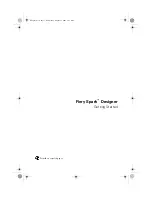
PRIORITY
priority
identifies the execution priority for the purger process;
priority
is the execution priority,
from 10 through 199. The default is 165.
PROCESS
process-name
specifies the process name for the purger process;
process-name
is any unique, valid process
name of up to six characters; the first character must be a dollar sign ($). You cannot specify
any of the reserved process names listed in the Guardian Procedure Calls Reference Manual.
This parameter is not optional. You must explicitly name the purger process.
PURGETIME
mins
specifies the number of minutes the purger process waits between attempts to purge redundant
image trail files. The default value is 60 minutes.
RETAINCOUNT
num
specifies how many image trail files must be retained on disk for each image trail (including
the image trail file currently in use).
num
must be within the range 2 to 5000. If you do not
explicitly set this configuration parameter, the default value is 2. This configuration parameter
is only relevant for the triple contingency feature; otherwise, this parameter should be left
at its default value.
This parameter is important because if you lose the primary system, the triple contingency
protocol will work only if all of the missing audit records at the backup system which is further
behind in its RDF processing is still on disk on the other backup system.
For example, assume that you have lost the original primary system (\A), you have successfully
completed a takeover on both backup systems (\B and \C), and the MAT positions displayed
by the respective 735 messages are:
\B: 735 LAST MAT POSITION: Sno 10, RBA 100500000
\C: 735 LAST MAT POSITION: Sno 10, RBA 100000000
500 kilobytes of audit records is missing on \C.
Suppose that the image trail files are relatively small, such that the audit record at MAT 10,
100000010 was placed at the start of image trail file AA000025 on \B. If the purger on \B is
allowed to purge AA000025 before the takeovers occur, the triple contingency protocol will fail
because \C is missing some of the purged audit records (Sno 10, RBA 100000010 through Sno
10, RBA 100500000).
The RETAINCOUNT parameter is designed to prevent such a situation, although it is up to you
to set this value correctly.
You must figure out how much time disparity to allow for in the event that one receiver falls
behind the other. Such a disparity would occur, for example, if the communications lines between
the primary system and one of the backup systems were to go down for some period of time.
The RETAINCOUNT parameter must be such that no image trail files that might be needed for
triple contingency are ever purged.
The best way to estimate the RETAINCOUNT value to specify is to pick an acceptable time
differential such as 24 hours, 36 hours, or 48 hours; determine how many image trail rollovers
typically occur within that amount of time; and then set the RETAINCOUNT parameter to that
number of files.
For example, if you believe the two receiver processes will never be more than 36 hours apart in
their RDF processing and your image trail file sizes are such that rollovers occur only once every
24 hours, then you would be safe specifying a RETAINCOUNT of three for both backup systems.
In that situation, the purger process on both backup systems will always keep at least two image
trail files on disk (the one the receiver is currently writing to and the previous two). On the
backup system that is further ahead in its RDF processing, assume that files AA000010, AA000011,
and AA000012 are on disk, the receiver rolls over to file AA000013, and all updaters have just
begun reading file AA000013. Also assume that there are no long-running transactions that span
RDFCOM Commands
227
Содержание NonStop RDF
Страница 68: ...68 ...
Страница 186: ...186 ...
Страница 260: ...260 ...
Страница 278: ...278 ...
Страница 284: ...284 ...
Страница 290: ...290 ...
Страница 308: ...308 ...
Страница 322: ...322 ...
Страница 336: ...336 ...
Страница 348: ...348 ...
Страница 464: ...464 ...
Страница 478: ......
















































